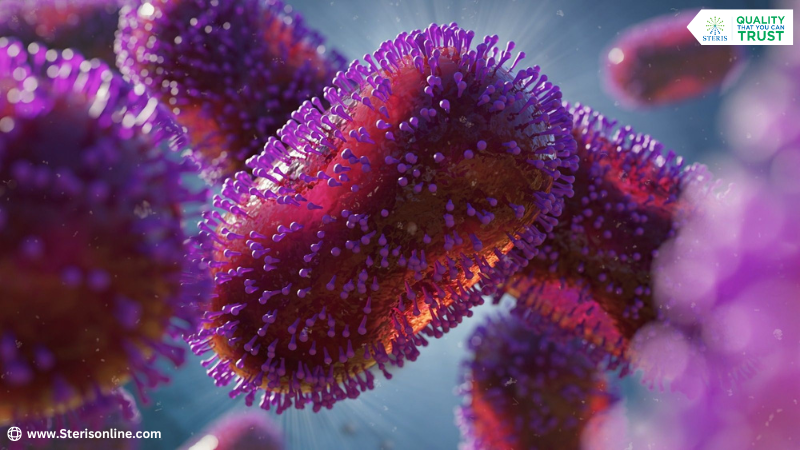Mpox Disease: Understanding the Viral Threat
Sep 21, 2024
Mpox, formerly known as monkeypox, is a zoonotic viral disease that has garnered attention due to its rising global cases in recent years. Although primarily found in central and west African countries, sporadic outbreaks in other regions have prompted health organizations to raise awareness about its transmission, symptoms, and preventive measures.
What is Mpox?
Mpox is caused by the monkeypox virus, a member of the Orthopoxvirus genus, which is related to the smallpox virus. Despite its name, the disease is not confined to monkeys; it can affect a variety of animals, including rodents. Mpox can also spread to humans through direct or indirect contact with infected animals, leading to a wide range of symptoms that resemble those of smallpox but are typically milder.
Symptoms of Mpox:
Mpox symptoms usually appear within 5 to 21 days after exposure to the virus. These symptoms can range from mild to severe and typically last for 2 to 4 weeks. The key symptoms include:
- Fever: Often the first noticeable symptom.
- Headache: Accompanied by muscle aches and body pains.
- Chills and Exhaustion: Fatigue and weakness may develop.
- Swollen Lymph Nodes: One of the distinct symptoms that differentiates mpox from smallpox.
- Rash: A hallmark symptom, it begins as red spots and progresses to pus-filled blisters. The rash can appear on the face, palms, soles of feet, and may spread to other parts of the body.
- Respiratory Symptoms: In some cases, coughing, nasal congestion, or shortness of breath may occur.
How Does Mpox Spread?
Mpox spreads through various modes of transmission, primarily from animal to human and occasionally between humans. Here are the most common ways the disease can spread:
-
Animal-to-Human Transmission: This is the most common form of mpox transmission, occurring through direct contact with infected animals such as rodents or primates. Exposure to body fluids, blood, or skin lesions of these animals can transmit the virus.
-
Human-to-Human Transmission: Although less frequent, mpox can spread between humans through close physical contact. Direct exposure to respiratory secretions, bodily fluids, or skin lesions from an infected individual can lead to transmission. Prolonged face-to-face contact or handling objects (such as clothing or bedding) contaminated by an infected person also increases the risk.
-
Droplet Transmission: Large respiratory droplets expelled by coughing or sneezing can carry the virus, but this usually requires sustained contact with an infected person.
-
Fomite Transmission: Contaminated surfaces or objects, such as bedding, clothing, or medical equipment, can also facilitate the spread of mpox.
precautions to take to prevent the spread of mpox (monkeypox):
-
Avoid Close Contact: Refrain from direct skin-to-skin contact with individuals who have visible rashes or sores, particularly those resembling mpox lesions.
-
Practice Good Hygiene: Wash your hands frequently with soap and water or use hand sanitizer, especially after contact with others or shared surfaces.
-
Disinfect Surfaces: Clean and disinfect commonly touched surfaces, bedding, clothing, and shared items to minimize contamination.
-
Wear Protective Gear: Use gloves, masks, and other personal protective equipment if you are caring for someone with mpox.
-
Avoid Sharing Items: Do not share personal items like towels, bedding, clothing, or eating utensils with someone who is infected.
-
Vaccination: If eligible, consider getting the mpox vaccine, especially if you're at high risk of exposure.
-
Seek Medical Attention: If you suspect you have mpox symptoms, isolate yourself and consult a healthcare provider for guidance.
Conclusion:
Mpox, though not as widespread as other viral infections, remains a significant concern due to its ability to spread from animals to humans and between humans in close contact. While most cases resolve without complications, severe cases can occur, particularly in immunocompromised individuals. Early recognition of symptoms and prompt medical intervention can help in controlling the spread of the disease. Public health measures, including vaccination and education about transmission prevention, are key to reducing the risk of mpox outbreaks. Maintaining hygiene and avoiding contact with potentially infected animals or individuals are vital steps to prevent infection. As research continues, understanding and combating mpox will remain essential to safeguarding global health.
Recent Post

Amiodarone Hydrochloride Tablet uses, Dosage, Side Effects, precautions and more

METAPECT METHO: diclofenac potassium and paracetamol tablets

Multivitamin Softgel Capsule:Boost Immunity, Energy, and Overall Wellness

Fluticasone furoate nasal spray price:Price, Dosage, Uses & Buying Tips

Lutein And Zeaxanthin Tablet:Natural Support for Age-Related Vision Problems

Lutein, Zeaxanthin, Astaxanthin, Acetylcysteine & Melatonin Tablets for Complete Eye Health Support

Rosuvastatin and Clopidogrel Capsules:A Complete Guide for Heart & Cholesterol Care How It Supports Better Heart Health

Cholestyramine Powder:A Trusted Solution for High Cholesterol & Bile Acid Diarrhea

Sitagliptin and Empagliflozin:A Modern Combination for Better Diabetes Control

Levosalbutamol Sulphate Ambroxol Hydrochloride and Guaiphenesin Syrup:Effective Relief for Cough and Chest Congestion

